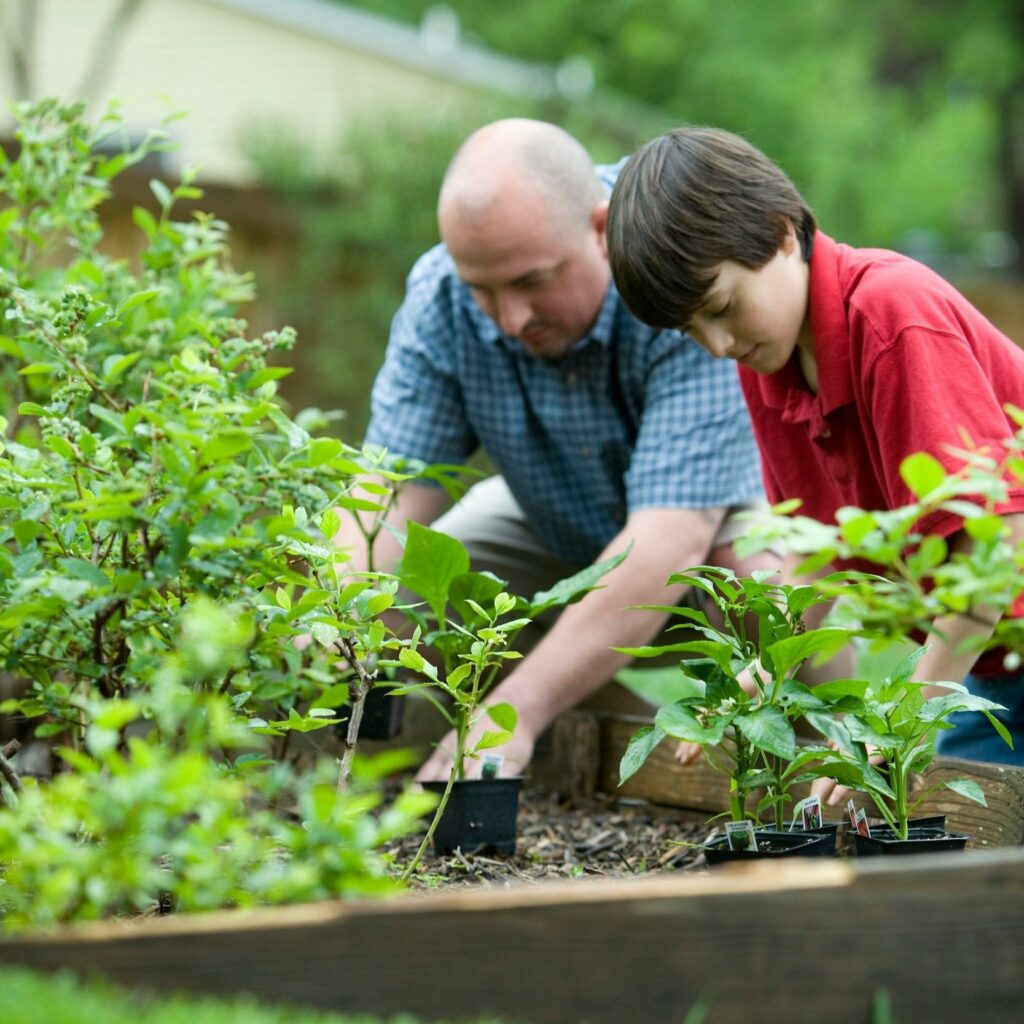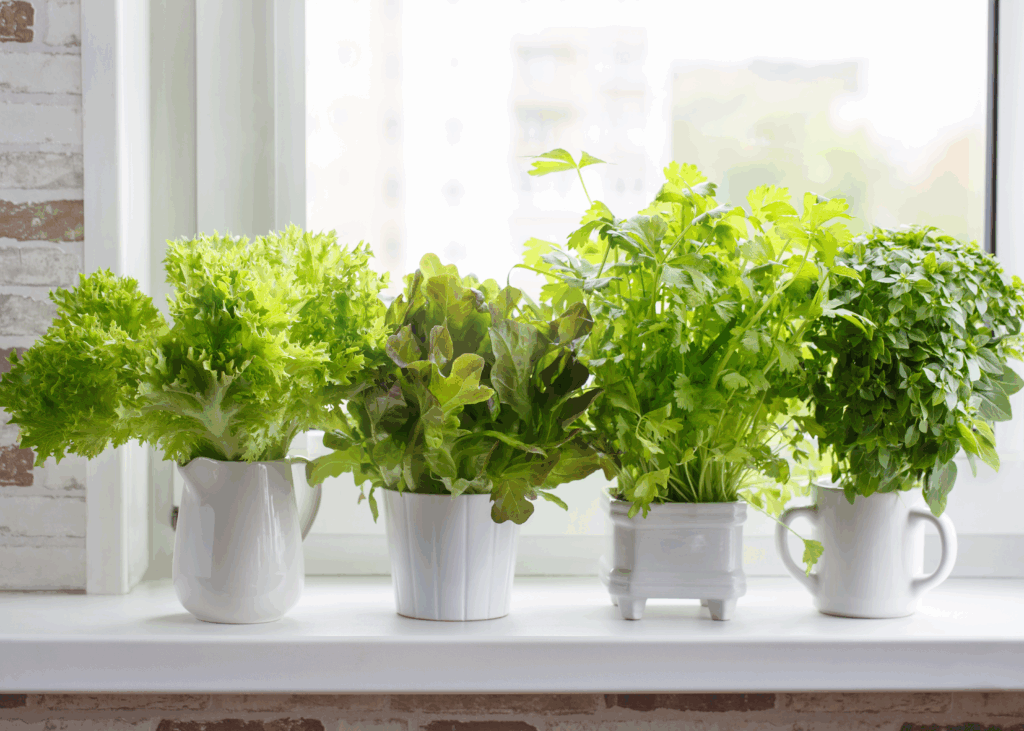This resource is part of our ‘Love what you eat‘ campaign for National Nutrition Week 2025.
This resource is part of our ‘Love what you eat‘ campaign for National Nutrition Week 2025.
Growing your own vegetables is easier than you think! It’s fun, rewarding, and brings a real sense of accomplishment. It doesn’t take a huge backyard, either. Even a small balcony or sunny windowsill can provide space for herbs, salad greens, or compact veggies. Growing food at home is something the whole family can get involved in, and it often makes kids (and adults!) more excited about eating their vegetables.
You can grow herbs, lettuce, tomatoes, carrots, the list goes on with little effort. By harvesting what you need, when you need it, your food is always fresh and nothing goes to waste.
You can grow a lettuce in as little as 30 days!
Pick a location where your veg will receive around 6 hours of sunshine although some leafy greens and herbs you can get away with around 4 hours!
Healthy soil is the foundation for healthy plants. If possible, invest in a good-quality potting mix designed for vegetables to give your veggies the best start. Keep nourishing them with homemade compost for ongoing growth and to reduce household waste.
It’s tempting to grow everything at once, but start with 4-5 plants you’ll really use and enjoy to avoid overwhelm. Think in threes:
One for Yum: your family’s favourite vegetable.
One for Done: a quick grower like lettuce, baby spinach, bok choy, or herbs (ready in 2-3 weeks).
One for Fun: something new to try, just for the experience.
Different veggies have different needs, but most prefer even, regular watering. Young seedlings may need a bit more attention to stop the topsoil drying out. Avoid overwatering – soggy soil can harm roots.
If it’s your first time growing veg you don’t want to be overwhelmed. While growing veg is extremely fun and low maintenance there is still some work that goes into it. Stick to a smaller veggie garden for the first year or two to make sure you keep it enjoyable and exciting.
Choose a spot that’s both sunny and convenient, ideally close to your kitchen so you’ll be reminded to pick and use your herbs and veggies often.
Seedlings can be a great option for beginner gardeners. They’re healthy, established, and give you an early sense of success.
But not every plant likes to be moved. Some vegetables, even though they’re sold as seedlings, struggle with transplanting. This can leave new gardeners frustrated, wondering what went wrong. As a general rule, these plants grow best when their seeds are sown directly where they’ll stay:
Root crops: Carrots, radishes, beets, parsnips, turnips
Legumes: Peas, beans (they establish quickly and dislike transplanting)
Corn & pumpkin family: Sweet corn, zucchini, cucumbers, melons, pumpkins (though seedlings can work, they’re sensitive to transplant shock)
One of the secrets to a thriving veggie patch is planting the right crops at the right time. Vegetables have preferred growing seasons, and matching your crops to the climate makes gardening easier, more productive, and far less frustrating.
💡 Tip: Check what grows best in your climate and when. A veggie zone map, like this one from ABC Gardening Australia, is a great tool to guide your planting.
Make your veg garden part of your family activities, spend quality time with your family planting, taking care of and picking your vegetables.
Place your leftover roots of spring onions, lettuce and the stems of herbs like basil, rosemary and mint in a shallow bowl of water, on a sunny ledge. New shoots and roots will start appearing and you’ll have more vegetables to cook with.
Turn veggie scraps and ined into compost. A compost bin transforms peelings and leftovers into free nutrients for your garden.
Consider a worm farm. They’re fun for kids to look after, help reduce food waste, and create rich fertiliser for your plants.
Some of the easiest veggies to grow at home include:
This community-driven platform is all about helping Australians grow their own food, no matter where they live. Their step-by-step “How To” guides make gardening accessible and fun, whether you’re starting with herbs on your windowsill or building a veggie patch in your backyard.
You’ll find practical tips, seasonal planting advice, and inspiration from fellow growers across the country. It’s also a great way to connect with like-minded people who are passionate about food, sustainability, and community.
Every good garden starts with healthy soil and composting is one of the best ways to build it! Compost Revolution is a fantastic resource to learn all about composting and worm farming.
They also partner with many local councils to offer discounted compost bins and worm farms, making it easier and more affordable to recycle your food scraps at home. By composting, you’ll not only give your plants a boost, but also help reduce food waste going to landfill.
Here are some quick and tasty ways to enjoy your homegrown produce:
Lettuce & Greens → Toss into wraps, DIY lettuce cups, add to pizzas, blend into smoothies, add to salads, or sandwiches
Tomatoes → Slice onto toast, make a quick salsa, or roast for pasta
Carrots → Eat raw with hummus, grate into savoury muffins, fritters, or salads, or roast with olive oil and herbs
Zucchini → Grate into muffins, spiralise into zucchini noodles (“zoodles”), slice for stir-fries, or grill with cheese
Mixed Herbs → Sprinkle over soups, curries, pasta, homemade pizza or make a pesto
Utilise your home-grown basil with this simple and delicious basil dressing.
Take your basil dressing to the next step in this pesto pasta salad. Lettuce and cherry tomatoes are also suitable for home gardens.
See your garden in your plate in this fresh nourish bowl, highlighting fresh herbs and produce.
Explore more useful resources.

